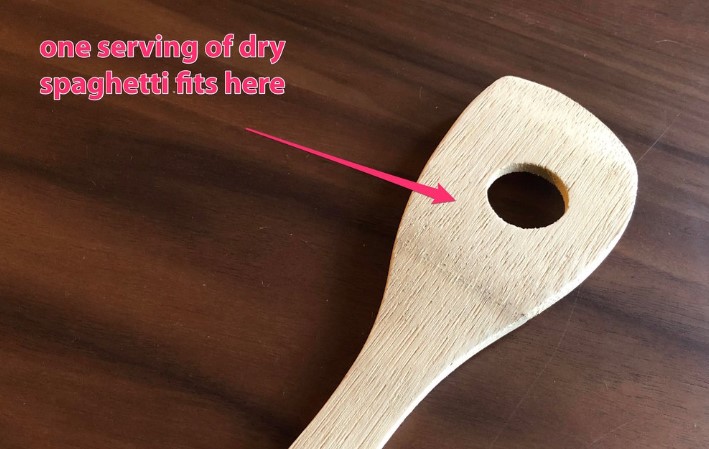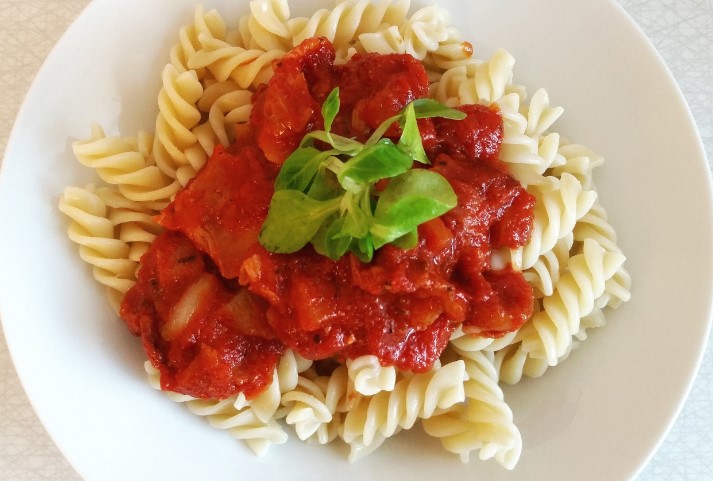Pasta is one of the most beloved dishes in the UK, from classic spaghetti Bolognese to comforting mac and cheese. But whether you’re cooking for one or an entire family, getting the right amount of pasta can be tricky without a kitchen scale. Too much, and you end up with leftovers nobody wants. Too little, and someone might still be hungry.
Fortunately, measuring pasta without scales is easier than you think! In this guide, we’ll show you a variety of simple methods to measure different types of pasta using tools you already have in your kitchen.
Let’s dive into some quick and easy ways to get the perfect portion, every time.
Why Measuring Pasta Matters
Understanding how to measure pasta properly isn’t just a matter of convenience—it has practical implications for portion control, reducing food waste, and ensuring that you’re getting the right nutritional value from your meals.
1. Portion Control for Health
The average recommended serving size for dried pasta is about 75g per person, according to UK dietary guidelines. When you overestimate, you end up with larger portions that could contribute to overeating. On the other hand, underestimating may leave you unsatisfied. Knowing the proper portion sizes helps maintain a balanced diet, especially if you’re trying to manage your weight or adhere to specific health goals.
2. Reducing Food Waste
Many households in the UK are concerned about food waste, and pasta is often a culprit. By using the right measurements, you can cook just the right amount, saving leftovers and reducing the environmental impact of wasted food.
3. Financial Savings
Pasta is affordable, but over time, cooking too much can add up. With rising food prices, controlling portion sizes means you’re maximizing what you buy and saving money in the long run.
Common Methods to Measure Pasta Without Scales
While kitchen scales are a reliable way to measure ingredients, they’re not always available. Luckily, there are several alternative ways to measure pasta without the need for scales.
Using Measuring Cups or Mugs (for Dried Pasta)
One of the easiest ways to measure pasta without a scale is by using measuring cups or even a household mug. Many recipes call for pasta in grams, but you can translate that to cup measurements for convenience.
- For small shapes like penne, fusilli, or farfalle: A standard UK measuring cup holds approximately 75g of dried pasta, which is roughly one serving.
- If you don’t have a measuring cup: A typical UK mug holds around 200ml, which equals about one serving of pasta (75g). This method works well for short pasta shapes that are easy to scoop.
Simply fill the cup or mug with the dried pasta and you’ll have an accurate estimate of your serving size.
Using Handfuls (for Long Pasta like Spaghetti)
For long pasta like spaghetti, linguine, or fettuccine, the best way to measure is using your hand as a guide.
- Spaghetti or linguine: Gather a bunch of pasta that fits between your thumb and forefinger, forming a circle about the size of a £1 coin. This equals one serving, roughly 75g of dried pasta. If you’re cooking for two, double this amount.
If you have smaller hands, you may need to adjust, but this method is a great starting point. For accuracy, it helps to break the pasta in half and see how much comfortably fits in your hand.

Image source: trustyspotter.com
Using a Pasta Serving Tool
If you cook pasta regularly, investing in a pasta serving tool can save time and ensure accuracy. Many UK supermarkets and kitchen stores sell these tools. A typical pasta tool has holes of varying sizes, each designed to measure a specific portion of spaghetti or other long pasta.
- Spaghetti spoon: Many spaghetti spoons come with a hole in the centre. This hole is designed to measure a single portion of long pasta. Simply thread the dry spaghetti through the hole, and you’ll have a portion ready to cook.
- Where to buy: You can find pasta serving tools at stores like Tesco, Sainsbury’s, or John Lewis. They’re an affordable investment for perfect pasta every time.

Image source: measurementunits.co.uk
Measuring Cooked Pasta
It’s important to note that pasta swells as it cooks, usually doubling in size. If you want to measure your pasta after cooking, the process is just as simple, but you’ll need to adjust the portions.
- One serving of cooked pasta: This typically measures around 1 cup (or 250ml). If you’ve cooked too much, just measure out 1 cup per person and store the rest as leftovers.
- Estimating cooked pasta portions: If you’re unsure about how much to cook, consider that 75g of dried pasta will yield about 150-200g of cooked pasta, depending on the type of pasta. Use this as a guideline when serving.

Image source: trustyspotter.com
Estimating Portion Sizes for Different Types of Pasta
Not all pasta is created equal, and some shapes require a bit more finesse when measuring without scales. Here’s a quick guide to some of the most common pasta shapes and how to estimate their portions:
Spaghetti, Linguine, and Fettuccine
As mentioned earlier, use the hand method (measuring a bunch the size of a £1 coin) or a spaghetti measurer. Another option is to use a small kitchen scale conversion: 75g of these long pastas is approximately a fistful.
Penne, Fusilli, and Farfalle
For short pasta shapes like penne and fusilli, use a measuring cup or mug. One cup of dry pasta is equal to around 75g, making it an easy way to portion out what you need.
Lasagna Sheets
Lasagna is a bit different as it comes in flat sheets, but you can still estimate portions. Typically, 2-3 sheets of lasagna will make up a single serving. Adjust according to the size of the sheets and your baking dish.
Ravioli or Tortellini
If you’re cooking filled pasta like ravioli or tortellini, the portion sizes will differ slightly. A typical portion is around 100g of fresh pasta per person, as filled pasta is more substantial.
Visual Guides to Help with Pasta Measurement
Sometimes, the best way to estimate is by comparing pasta portions to common objects. Here are some visual guides to help you measure your pasta accurately:
- For spaghetti: A serving of dried spaghetti (75g) looks like a bunch about the diameter of a £1 coin or comparable to a broomstick handle in thickness.
- For penne or fusilli: A cup of pasta (around 75g) will be about the size of a tennis ball.
- For cooked pasta: One serving of cooked pasta (around 1 cup or 250ml) will fit comfortably in a small cereal bowl.
These visual aids can make it easier to judge your portion sizes, especially if you’re not used to using measuring tools.
Quick Tips for Cooking the Right Amount of Pasta
Here are some final tips to help you cook the perfect amount of pasta every time:
- Batch cooking: If you’re unsure about measurements, it’s often better to err on the side of caution and cook a little extra. Pasta keeps well in the fridge for a couple of days and can be used in salads or reheated with sauce for the next meal.
- Leftovers: Cooked pasta can be stored in an airtight container in the fridge for up to 3 days. Add a little olive oil to prevent sticking.
- Trial and error: The more often you cook pasta, the better you’ll get at eyeballing portions. Practice makes perfect!
Conclusion
While kitchen scales can provide precise measurements, they are not always necessary for cooking pasta. By using common household items and understanding the basic principles of pasta measurement, you can easily estimate the appropriate quantity for your desired serving size. With a little practice and experimentation, you’ll be able to cook perfect pasta every time.
From using measuring cups and mugs to handy visual guides, these simple methods ensure that you’re cooking the right amount of pasta every time. So, whether you’re preparing a hearty family dinner or a quick solo meal, you can now portion your pasta like a pro!
Frequently Asked Questions (FAQs)
You can measure pasta using everyday items like a measuring cup or a mug. For long pasta like spaghetti, use the “fist method”—a bunch the size of a £1 coin equals one serving (75g). For short pasta like penne or fusilli, one cup or mug equals about 75g.
For long pasta (spaghetti or linguine), gather a handful the size of a £1 coin. For short pasta (penne, fusilli), fill a cup or mug, which equals about 75g.
For short pasta, use a bit more than one standard UK mug or cup (1 cup is about 75g). For long pasta, gather slightly more than a £1 coin-sized bunch of spaghetti for around 100g.
Use household items: a standard mug holds about 75g of short pasta, and a £1 coin-sized bunch of long pasta equals about one serving (75g). For cooked pasta, one serving is roughly 1 cup or 250ml.
